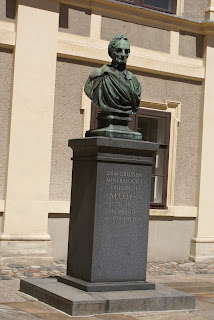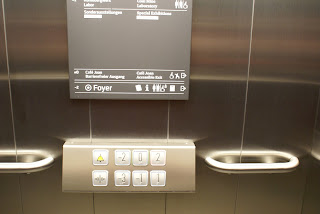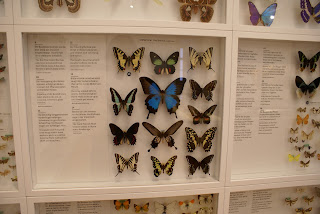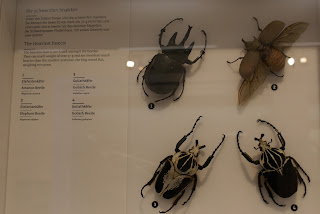Ins Naturkundemuseum! This museum is located in the Joanneum Quarter, a complex of buildings which houses several museums.
Upon entering the courtyard, I learned that Friedrich Mohs, he of the Mohs Scale of Hardness, worked at the Joanneum (the technical university founded by Archduke Johann). Here is his statue:
The entrance places you two stories under ground, and one must go back up to the second floor to visit the natural history museum.
The natural history collection was recently reorganized and placed into a new exhibit space. I was impressed by the design of the exhibits. The plant and animal exhibits focus on biodiversity and evolution while the geology exhibit focuses on rock formation over time along with an understandably kick ass mineral collection.
The introductory exhibit features animals native to the region of Styria.
In addition to the taxidermy specimens were many dried plants. I thoroughly enjoy visiting museums like this because they provide a smorgasbord of interesting words that rarely come up in every day conversation.
Badger badger badger badger badger badger...
In addition to native plant species, there was a wall dedicated to invasive species also found in the area.
This is also a good place to go if you don't know what to call that weird bug you found in your room.
European hares are huge. Adjust any mental images involving rabbits in stories set in Europe appropriately.
Weasels.
There were also examples of variation caused by artificial selection by humans.
This shows how selection can create mimics. In the center is a poisonous butterfly. Predators would avoid this butterfly, so nontoxic butterflies that happened to have similar markings were left alone. This selection pressure resulted in varieties of nontoxic butterflies that closely resemble the toxic kind.
Leaf bugs are cool.
How many birds can you find in this grass?
These are two pairs of species who have different ranges based on the type of soil.
There was a film area where you could either sit or lean against the padded wall. The movie was a time lapse photography study of the life cycle of fungus, which was really neat looking.
Protein!
There was also a display dedicated to outliers: largest, heaviest, longest, etc.
This is an Alpien Ibex, which is being reintroduced into the wild in its former territory.
Rock formation cycle.
This is a (small sample of a) lithoteque. Each slab is a sample of a particular kind of rock with notes as to its type and place of origin.
I didn't stick around to watch this exhibit, but it's a relief map with a projector above it that can display various overlays that go along with an audio program, which explains various features of the region.
So much shiny...
Lots and lots of wooden models of three dimensional forms used as references for studying crystal formations.
Here's a shot of the entrance as I was on my way home.
The courtyard of the Joanneum.
Here's a different view of the Hauptplatz. The clock tower is on top of the Schlossberg, which is where I went on Thursday.
































































No comments:
Post a Comment